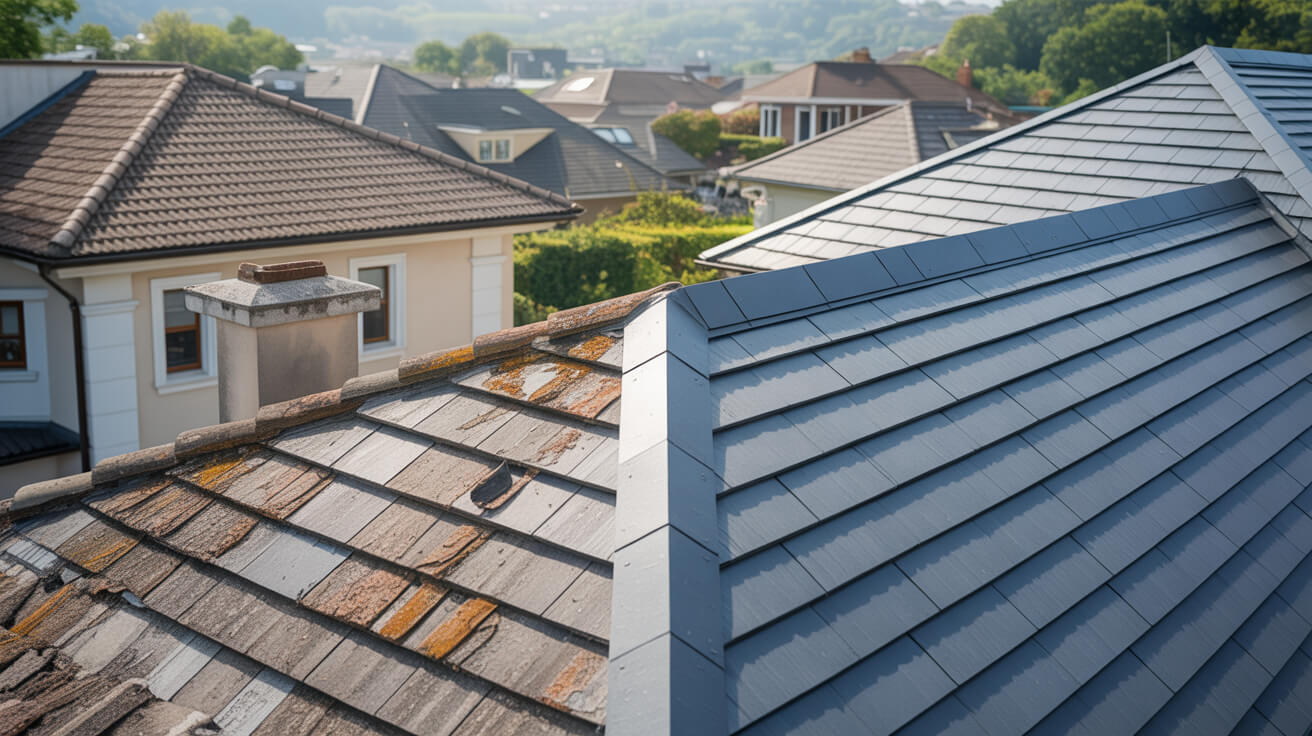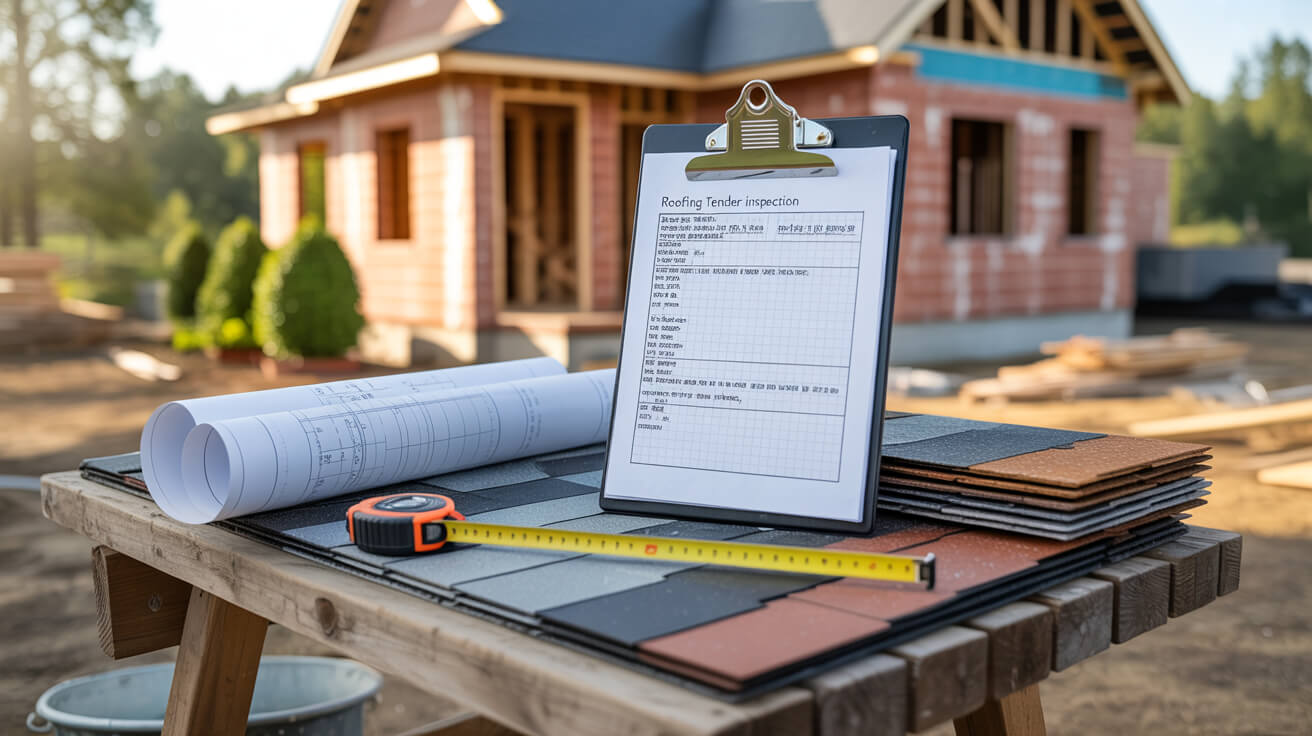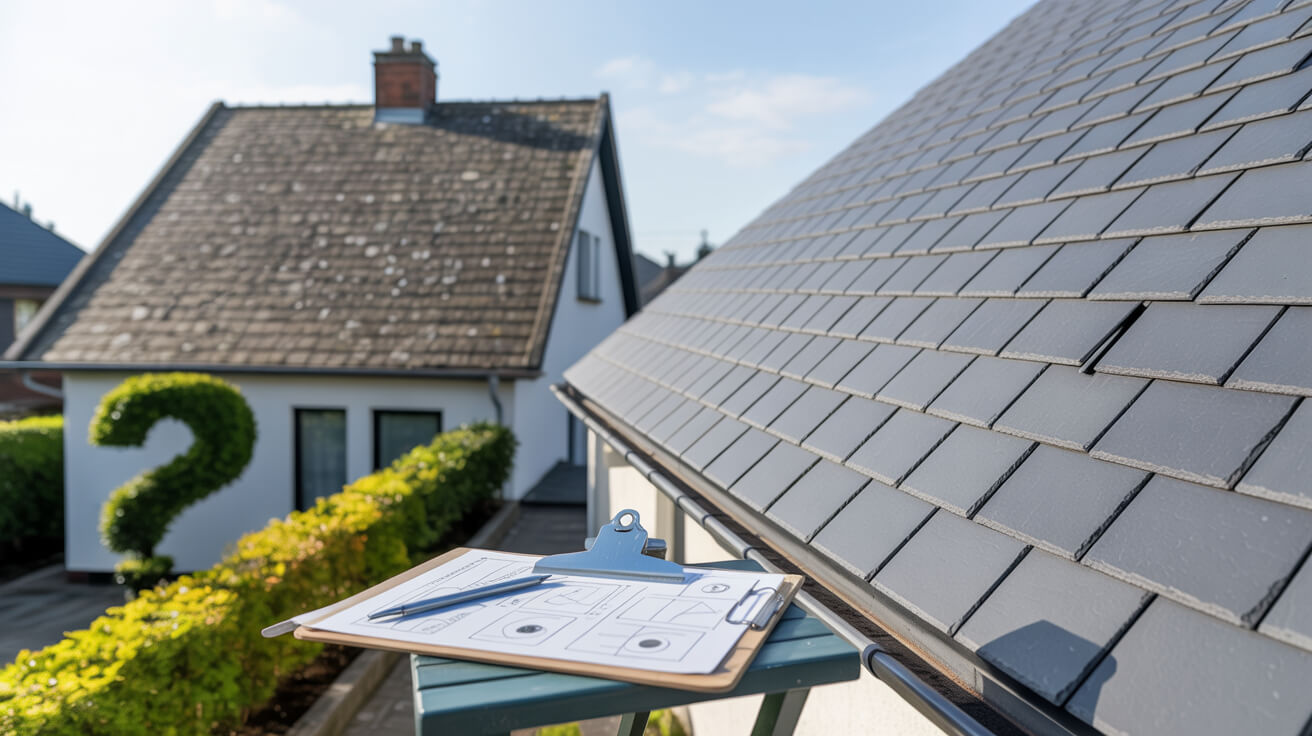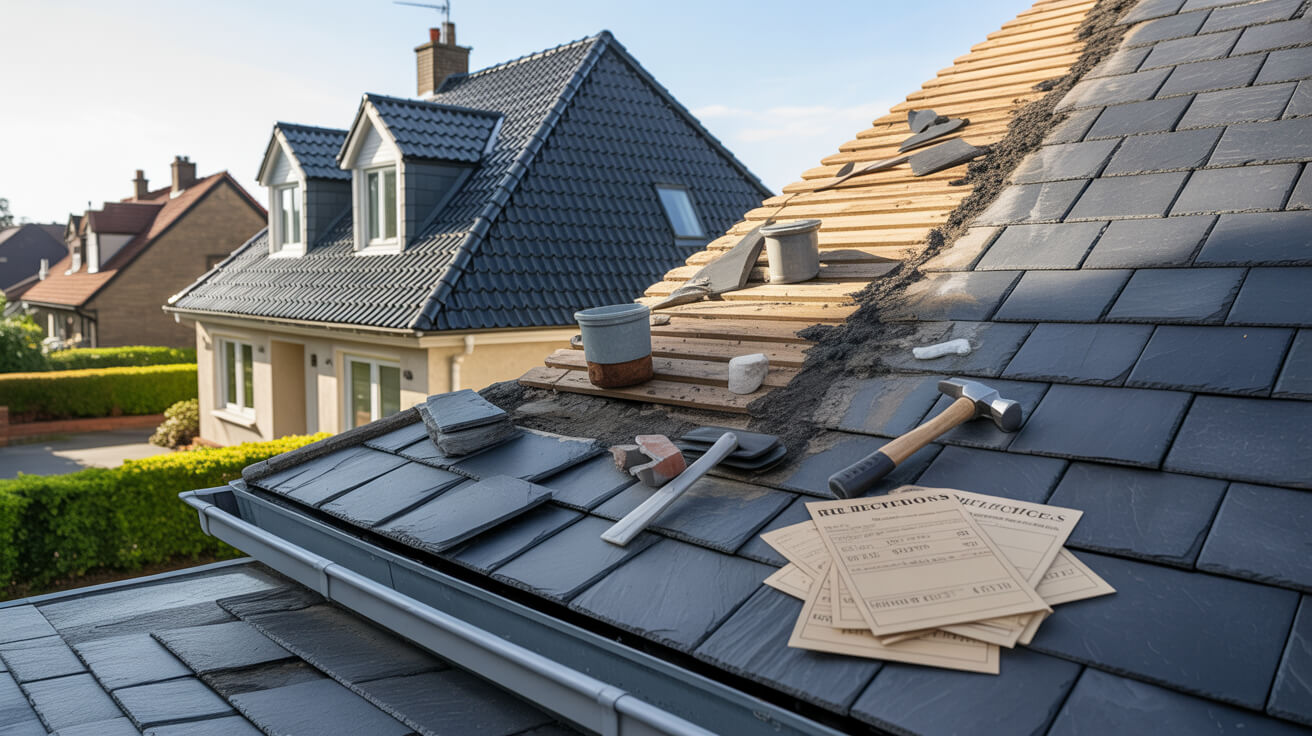 What’s the Real Cost of a New Roof in 2024
What’s the Real Cost of a New Roof in 2024
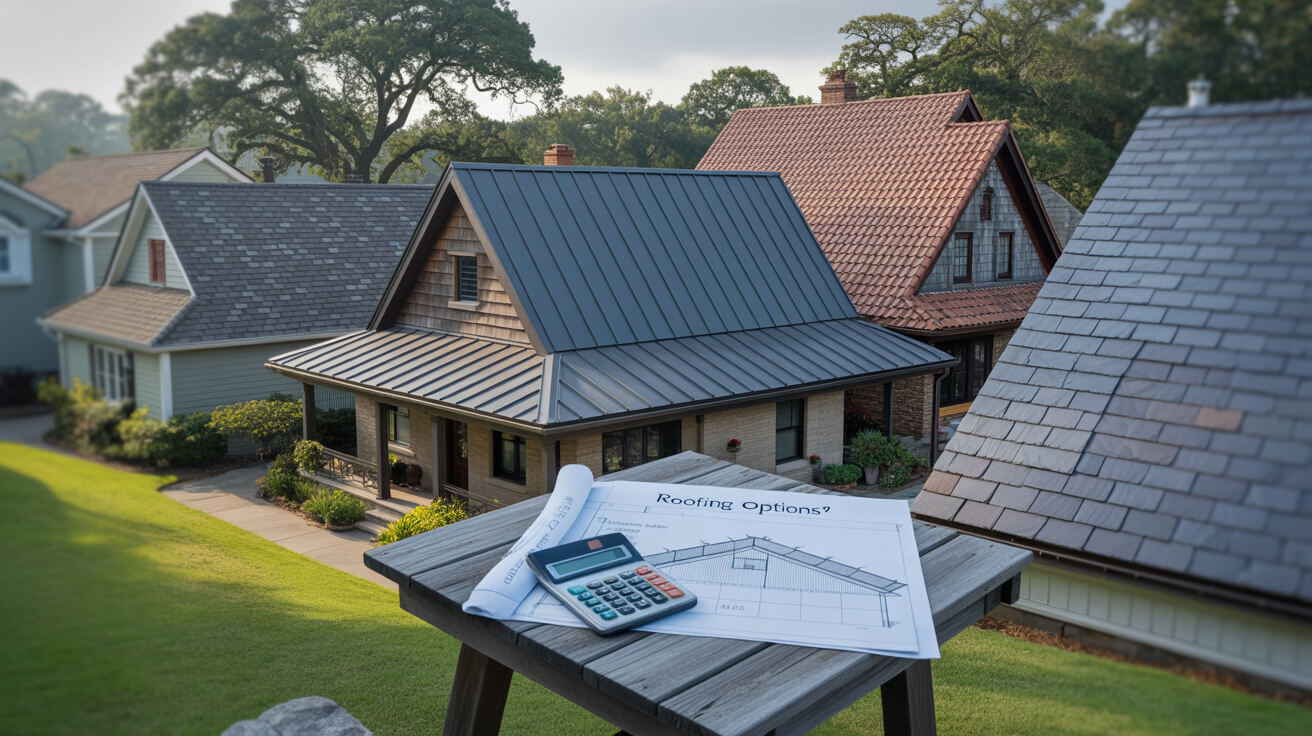
The True Stakes Behind Roofing Costs: Why Clarity Matters for Every Home or Project Owner
The question surfaces when damage or age finally wins: “What will a new roof really cost me?” Uncertainty follows—bred from headlines about material inflation, fuel surcharges, and labor bottlenecks, but made urgent by the vulnerability that leaks or failing roof structures expose. The cost of your new roof is never just a number; it’s a matrix of real market trends, changing regulation, supplier swings, unseen extras, and the resilience of your contractor. In 2024, ambiguity is more than an annoyance—it’s a financial and operational risk.
Choose the wrong system, accept a vague quote, delay a necessary upgrade, or trust an unqualified team, and the result isn’t a savings—it’s a rolling series of setbacks that eat into property value, legal compliance, and daily peace of mind.
JG Leadwork and Roofing gives you cost certainty and regulatory assurance—right from the start.
What Are the Economic and Technological Drivers Impacting Roofing Costs in 2024?
Winds of Change: Market Pressures and Roof Investment Anxiety
Material prices in the UK are shaped by global energy markets and logistics, not just local yards. In 2024, even small, rural jobs feel the ripple of overseas supply crunches and domestic contractor shortages. Timber, insulation, slate, and lead have seen price lifts of 10–18% year-on-year. Skilled labor is at a premium, not only due to heightened demand but because regulation upgrades (such as recent BS5534 and Part L changes) force upskilling.
Key cost drivers include:
- Material Inflation: With supply chain stress, UK roofing materials (slate, lead, high-spec membranes) now fluctuate weekly. Imported materials have especially volatile pricing due to transport and border factors.
- Labour Shortages: Fewer proven roofers mean project lead times push out, labor rates climb, and a wait-list for heritage and complex jobs.
- Compliance Burden: Contractors and property owners contend with mandatory upgrades—ventilation rules, energy performance, permitted development restrictions, and expanded scope for post-Grenfell fire compliance.
- Tech Innovations: Adoption of systems such as EPDM, TPO, and advanced breather membranes delivers better results and lifespan but increases entry-level pricing (offset by long-term value and warranty coverage).
INFOGRAPHIC
The intersection: As more property owners delay action hoping for stabilisation, the “compound cost of delay” grows—12–15% cost increases are seen when urgent works are put off for just six months, and regulatory penalties for non-compliance have doubled.
Don’t let uncertainty or speculation drive your decisions. Rely on a written, itemised assessment with clear cost breakdowns—JG Leadwork and Roofing’s transparency is your safeguard.

How Do Material and Labour Costs Break Down in a Roof Replacement Project?
From Tiles to Time: Deconstructing the Real Price
Get three quotes. See three wildly different numbers. Why? Because “the cost of a new roof” isn’t a commodity figure; it’s the sum of hundreds of decisions.
Key cost ingredients:
- Material Selection: —Lead (Code 4, 5, 6), Welsh or Spanish Slate, high-performance membranes (like GRP, TPO, EPDM), and clay or concrete tiles all have unique price bands, risks, and compliance features. Opting for British Standard, FeRFA-graded, or heritage-certified materials raises initial quotes but pays back in lifetime assurance.
- Labor & Skill Level: —Heritage leadworkers and reputable GRP roofers demand premium rates due to qualifications and warranty provision. Urban areas and Southeast England typically see rates 20–35% above the national average.
- Project Access & Safety: —Complex scaffolding, safe access, working at height, and protection of neighboring property must be factored. Jobs involving chimneys, awkward pitches, or listed details increase both manpower and timeframe.
- Administrative & Overhead: —Site waste disposal, permit fees, traffic management, insurance, surveys—all baked in for regulatory or contractual compliance.
- Margins for Warranty and Aftercare: —Quality contractors include call-back allowance, roof health checks, and insurance-backed warranties, which might add 5–15% but save multiples in future emergency callouts.
SUPPORTING TABLE
| Component | Typical Cost Range (£/m²) | Key Influencers |
|---|---|---|
| Slate (Welsh) | £90–£120 | Spec, origin, project scale |
| Lead (average, incl. install) | £250–£350 | Thickness, code compliance, access, detail |
| EPDM/Single-Ply | £70–£110 | Layer build-up, trims, penetration count |
| Labour (standard to heritage) | £65–£150/hr | Crew size, region, skill set |
| Overheads (all-in, % of total) | 12–25% | Set-up, waste, equipment, compliance, admin |
If your quote isn’t itemized, risk and upsell are hidden at your expense. Demand clarity. Ask about the assumptions, the material spec, and the overhead inclusions.
JG Leadwork and Roofing provides quotes that detail every line—empowering your cost control and budget certainty.
What Are the Cost Implications of Different Roofing Systems?
System Fit Versus Sticker Price: Pitched, Flat, Heritage, or Commercial?
Choosing the right roofing system means considering where long-term value and compliance outweigh the temptation for perceived short-term savings. Here’s how each system affects budget, maintenance, and reliability:
- Pitched Roofing: Traditional slates, clay, and concrete tiles dominate, but not all are equal. Welsh slate and handmade clay command higher quotes but outperform generic imports in lifespan (60–120 years).
- Flat Roofing: Modern flat systems (EPDM, GRP/fibreglass, TPO, or multi-layer torch-on felt) differ drastically in cost and resilience. Flat roofs on commercial projects benefit from single-ply or inverted warm systems with advanced drainage—critical for warranty and insurance acceptance.
- Heritage & Listed: Only specific lead codes, lime-rich mortars, and specialist slates are permitted. Compliance with Historic England and UK Building Regulations add survey and specialist charges, while heritage-quality installation prevents costly future work and insurer non-renewal.
- Commercial/Industrial: Large roof areas bring economies of scale, but specialist flashing, rooflight, insulation, fire-safe detailing (especially for NHBC or public contracts) adds cost.
COMPARISON CHART
| Roofing System | Initial Cost | Compliance Rigor | Long-Term ROI | Failure Risk if Inexperts Used |
|---|---|---|---|---|
| Pitched (basic) | £80–£140/m² | Medium | High (if skilled) | High (if corner-cut) |
| Flat (standard) | £60–£120/m² | Low–Med | Medium | High if details skimped |
| Heritage/Listed | £150–£300/m² | Very high | Highest | Catastrophic if non-compliant |
| Industrial/Commer. | £45–£90/m² | Moderate | ROI varies | Major project risk |
System selection influences everything: insurance approval, long-term cost, failure rate, and legal standing. Don’t chase the initial low—prioritize fit, compliance, and warranty.
JG Leadwork and Roofing walks you through these choices, ensuring system selection matches your needs, compliance, and property lifecycle strategy.

The Hidden Cost Base: Why Transparency is Non-Negotiable
Unseen or “optional” extras are the most common source of budget blowout. Ambiguity lets inexperienced or unscrupulous contractors exploit the gray area between what’s “included” and what’s “excluded.”
Common hidden fees you’ll see:
- Permit and Planning Charges: (especially for listed or conservation properties, or when roof works affect shared access/party walls)
- Waste and Access Surcharges: (unexpected skip extensions, hazardous material disposal, or extra scaffolding not declared at quote)
- Condition-Based Extras: (rotten timbers, hidden rot, underlying waterproofing failure revealed only during strip-out)
- Admin/Insurance Premiums: (inflated for projects near highways, watercourses, or involving major public liability)
- Unforeseen Surveys/Structural Reports: (now more common with strict council oversight; expect £200–£700+ per incident)
Avoid cost creep by:
- Demanding a quote with itemization by task, material, and overhead—plus explicit “likely extras” as scenarios, not vague disclaimers.
- Insisting that additional works and change orders be written and signed (with photographic documentation).
JG Leadwork and Roofing’s approach: no hidden extras, all likely scenarios mapped up front, and every fee explained in writing to keep your project under control.
How Do Location and Material Quality Influence Roof Pricing?
Region, Quality, and the True Cost of a Safe Roof
A price per square metre doesn’t mean much without knowing where you are, how skilled your local roofers really are, and whether your materials have been chosen for current cost, long-term reliability, or worst—whichever was available cheapest on the day.
Location influences:
- Urban premium: Cities attract higher material, scaffold, and skilled labor costs (Central London, Cambridge, Oxford regularly reach +30%).
- Transport & Access: Remote, rural, or conservation sites can double logistics costs, particularly heavy heritage tiles, lead, or specialist insulation.
- Labour markets: Local skills gap pushes up cost, especially for heritage, leadwork, or systems requiring warranty-certified installers.
- Material market: High-quality slates, intrinsic lead, and properly sourced lime mortar hold value but can’t always be sourced “off the shelf” without delay and premium.
Material importance:
- Top-grade membranes and code-compliant leads last decades, outpacing first-cost savings on unproven systems.
- Approved, branded materials streamline insurance and mortgage compliance—cheap alternatives can trigger claim denials or future upgrades.
Quality isn’t cosmetic—it’s your roof’s value foundation. JG Leadwork and Roofing prioritizes compliant sourcing and local-market expertise to ensure your investment isn’t eroded by shortcuts.
What Is the Impact of Regulatory Requirements and Incentive Programs on Roofing Costs?
Compliance: The Roof’s Silent Bodyguard (and Budget Driver)
Building regulations matter, not just for peace of mind but for legal and financial safety. UK mandates such as BS5534 (slating and tiling), Part L (energy performance), and current Part B (fire safety) have elevated minimum requirements—meaning even basic jobs face stricter inspection (often triggering budget overruns where compliance is neglected or under-quoted).
How compliance lifts value (and cost):
- Mandatory upgrades: Ventilation, fixings, underlay, fall arrest—now all subject to council checks and “Competent Roofer” self-certification. Cut corners, and you risk fines, insurance refusal, or resale trouble.
- Inspection & Evidence: Mortgage or grant release may hinge on visible proof of correct install.
- Grant matrix: Eco-roof incentives and heritage preservation grants can offset first cost if properly applied—but must be integrated at quote stage, not post-facto (else, missed opportunity or wasted paperwork).
TABLE: Typical Compliance Costs Added
| Requirement | Upgrade Description | Cost Range (added, approx) |
|---|---|---|
| Ventilation | Eaves/low ridge + tile | +£8–£20/m² |
| Insulation | Warm roof/inverted system | +£25–£40/m² |
| Heritage List | Lead, lime, survey | +£75–£150/m² |
| Solar Incent. | Rooflight + PV support | +£18–£40/m² |
Non-compliance is the most expensive risk you can take—JG Leadwork and Roofing secures your fit-for-purpose compliance, integrates all reporting for grants, and guarantees regulatory sign-off.
When Is the Optimal Time to Replace Your Roof for Maximum Value?
Timing, Opportunity, and the Rising Cost of Delay
Timing isn’t an art—it’s a cost science. High-demand seasons (late spring/early summer, post-storm windows) drive up both material and labor quotes, sometimes by 20% plus. Conversely, off-peak installs (autumn, early spring) can mean faster starts, improved supplier discounts, and easier scheduling.
Deferring replacement hoping for better markets is a common pitfall—each season exposes your property to weather, failure risk, and new regulation that might force expensive, unbudgeted upgrades. Emergency callouts are 2–5x more expensive per square metre versus planned works.
- Seasonal chip: Sourcing slate or lead at holiday periods or around public works inevitably adds weeks to start time.
- Advance planning: Early engagement secures better pricing, access to grant windows, and preferred project slots.
Book an assessment today—JG Leadwork and Roofing maps your risks, aligns timing to save on cost and future disruption, and locks in the best procurement window.

Book Your Free Consultation With JG Leadwork and Roofing Today
Secure Certainty, Compliance, and Lasting Value—No Surprises, No Regret
Your next roofing project is a defensive investment—protecting everything your property holds. Knowing the real cost isn’t just avoiding surprises; it means choosing a solution that secures property value, warranty coverage, and full compliance for years to come.
What you gain with a professional, transparent JG Leadwork and Roofing assessment:
- Upfront, line-by-line quote—no guesswork, no ambiguous “TBA”s.
- Proven expertise across leadwork, pitched, flat, and heritage roofs.
- Full regulatory and grant compliance guidance, integrated into every quote.
- Local material and labor insights to ensure you achieve best-value pricing and finish.
- Priority scheduling so you secure best pricing, season, and risk window.
Ready to know your real cost—no hidden extras, no variable “day rates,” just transparent, expert-backed certainty?
Book your detailed, obligation-free roof and leadwork assessment with JG Leadwork and Roofing now.
JG Leadwork and Roofing—cost certainty, compliance, and enduring value, every time.
Frequently Asked Questions
What Are the Economic and Technological Drivers Impacting Roofing Costs in 2024?
The Cost Equation—Why the Roof Over Your Head Demands Urgency, Not Guesswork
You face a landscape where every estimate is shaped by relentless market volatility, evolving building codes, and technological leaps that both help and complicate your decision. At its core, the real cost of your new roof in 2024 is a moving target, set by a collision of macroeconomic pressures, rapid material innovation, and ever-rising compliance standards.
Macroeconomic Tides That Push Every Quote Higher
- Material surges: Vital elements like slate, lead, timber, and insulation now fluctuate month by month—10–20% swings, even quarter to quarter. Many suppliers now price only on day of delivery, making budgeting a tense exercise unless your contractor is deeply networked in the supply chain.
- Labour shortages: Certified installers and heritage trades are in record demand, with urban rates sometimes 30% above rural averages. This scarcity is more than a number: it directly affects your project lead time, risk of delays, and warranty eligibility.
- Inflation: General consumer price inflation filters through, increasing overheads (permits, liability cover, waste haulage) often by stealthy increments.
- Compliance costs: The silent driver—recent years have seen a surge in BS5534 slating/tiling standards, Part L (energy efficiency), and fire safety mandates. These demand upgraded membranes, insulation, and advanced fixings, all of which boost initial quotes but protect you from future liability.
- Tech upgrades: Investments in EPDM, TPO, advanced breather membranes aren’t “extras”—they’re now the expectation for longevity and insurer approval, raising first cost but cutting future risk and maintenance cycles.
| Driver | Percent Impact | Recent Trend |
|---|---|---|
| Slate/Lead Cost | +12–18% | Volatile, rising |
| Labour (Skilled) | +15–30% | Persistent shortage |
| Compliance Fees | +8–15% | Regs enforced, rising |
| Tech Upgrades | +7–15% | Near-universal use |
Curiosity arises: Why do some quotes seem so much lower? Usually, because they ignore—rather than solve—these shapers. The trick is not to chase the cheapest number, but to demand an itemized quote that acknowledges every force at play.
Partnering with a contractor who predicts and contextualizes these cost drivers insulates your investment, rather than exposing it to the next market surge.
How Do Material and Labour Costs Break Down in a Roof Replacement Project?
The Anatomy of a Real Quote—Where Every Pound Actually Goes
A credible roof quote is never generic; it’s a living ledger revealing the true source of your outlay and the quality you can expect in return. Materials, labour, overhead, and compliance—if any line is missing, your budget isn’t safe.
Material Truths—Transparency in Every Layer
- Roof coverings: Welsh slate, premium tile, code-compliant leadwork—all command top rates (£90–£150/m² for slate, £250–£350 for lead). For flat roofs, expect £70–£120/m² for EPDM/torch-on felt, where proper layers and trim correlate with lasting performance.
- Labour—Not Just Hands, But Mastery: Certified trades command up to £120/hr for heritage or technical lead fitting, less for entry-grade systems—but “cheap” seldom means compliant or safe.
- Overheads are Not ‘Nice to Haves’: Site-specific costs include scaffolding, haulage, skips, lorry lifts, insurance, and project management, often 10–25% of project value.
- Compliance-driven extras: Modern building control commonly requires upgraded membranes or insulation, document production, and project signoffs, which—if omitted—become expensive retrofits.
| Component | Typical Range | Why It Matters |
|---|---|---|
| Welsh Slate | £90–£150/m² | Longevity, heritage, survey appeal |
| Leadwork (Code 5) | £250–£350/m² | Environmental, regulatory mandate |
| Flat System (EPDM) | £70–£120/m² | Lifespan, warranty, insurance |
| Skilled Labour | £60–£120/hr | Heritage, technical/system complexity |
| Overheads (total) | 10–25% | Project support, safe completion |
A quote from JG Leadwork and Roofing is always itemized—because only full detail means full control over your spend and full value in your new roof.
What Are the Cost Implications of Different Roofing Systems?
Your System, Your Destiny—How Material Choices Define Cost and Outcome
Your roofing system isn’t just an upfront price—it’s a set of conditions that can add, or leak, value for a generation. Pitched, flat, heritage, or commercial, every system comes bundled with distinct long-term cost and risk profiles.
The Real Cost Behind Roof Types
- Pitched roofs (tile/slate): Often the higher entry cost (£110–£170/m² for quality slate or handmade tile), but big returns as they command higher survey value and the longest lifespan—up to 100 years if specified and fit by the book.
- Flat roofs: Initial appeal with “quicker” or “cheaper” systems fades if upgrades or overlays are neglected. Modern EPDM or GRP pushes up initial cost, but failures from single-layer felt and poor trim pile up expensive repairs within a decade.
- Heritage/listed work: Only code-compliant lead, lime mortar, and specialist slates are permitted. The cost (£180–£400/m²) reflects this narrow supply plus heightened expertise and required compliance paperwork.
- Commercial/large scale: Economies of scale exist but project risk is magnified—errors or omissions can cost thousands, and compliance failure is not an academic issue but a business threat.
| Roofing System | Initial Cost | Compliance Need | Long-term ROI / Risk |
|---|---|---|---|
| Pitched Slate | High | BS5534 mandatory | Exceptional, if done well |
| Torch-On Flat | Low–Medium | Variable | Prone to leaks/overlay |
| EPDM / GRP Flat | Medium | Warranty-backed | Strong with correct fitting |
| Heritage Lead | Highest | Planning + Regs | High grant + survey ROI |
When you compare, focus on what protects your assets—compliance, warranty, and skillful install, not only the line-item price. JG Leadwork and Roofing matches systems to real-world performance, long-term cost, and property aspiration.
How Do Hidden Fees and Extra Charges Inflate Your Roof Replacement Budget?
Surprises Aren’t Accidents—They’re Consequences of Opaque Bidding
When “unexpected” costs hit on reveal day, the pain isn’t random—it’s engineered into lowball quotes and vague contracts. Hidden extras—permit fees, hazardous disposal, unforeseen repairs, or access surcharges—can turn a budgeted project into a financial setback.
Where the Surprises Hide
- Permits and planning licences: Often missed in initial quotes for listed or shared roofs, but frequently exceed £800 for compliance-heavy sites or delicate heritage jobs.
- Waste, access, and night embargoes: Discovering asbestos, or needing extra scaffolding or out-of-hours work, can double skip or labour costs in dense urban settings.
- Rot or structure: If rotten battens or soaked felt are only exposed mid-strip, expect instant price revision—and few contracts protect your position without pre-agreed scenarios.
- Insurance or professional uplifts: Projects near highways, public buildings, or commercial estates routinely add 10–15% for higher coverage or specialist oversight.
| Extras | Risk of Emergence | Cost Range | Prevention Signal |
|---|---|---|---|
| Permit/Planning | Moderate–High | Up to £1200 | Survey, scenario quote |
| Asbestos/Disposal | Low–Medium | £400–£1500 | Test, scenario quote |
| Rot/Hidden Fault | Medium | £500–£5000+ | Full pre-strip survey |
Clear communication and scenario mapping upfront prevent these pitfalls. Our process at JG Leadwork and Roofing anticipates likely extras, so you get cost control—not creeping regret.
How Do Location and Material Quality Influence Roof Pricing?
The Two Most Underestimated Variables in Roofing Budgets
Geography and material quality are the silent hands shaping every roof quote, yet too often they’re overlooked in a sea of generic pricing. Where your property stands and what goes on your deck can mean a 40% swing in cost—and a massive delta in lifetime satisfaction.
Parsing the Local and the Noble
- Urban/rural divide: Major metros like London, Brighton, or Manchester see sharp escalations—skilled labour in short supply, access premium, waste surcharges bite, and insurance requirements rise. Province and rural locations can often net lower labour and setup costs but may pay more for specialty material delivery.
- Material choices: Reputable, branded slates, properly specced membranes, and code-certified leadwork front-load expense, but cheap substitutes can void insurance, force future upgrades, or cause grant rejections. These choices intersect directly with property survey and resale value.
| Location | Slate/Tile Cost (per m²) | Leadwork Cost (per m²) | Labour/Misc Uplift |
|---|---|---|---|
| London City | £130–£170 | £350–£420 | +20–40% |
| Rural Essex | £95–£120 | £220–£320 | -10–15% |
| Listed Site | £160–£200 | £400–£500 | Heritage premium |
Rethink “lowest price” as a risk, not a benefit. We at JG Leadwork and Roofing always disclose the impact of location and precise materials—so your budget isn’t blind to the real picture.
What Is the Impact of Regulatory Requirements and Incentive Programs on Roofing Costs?
Compliance and Grants—Barriers or Pathways to Long-Term Value?
Regulation isn’t a mere checkbox—every rule, every grant comes with implications for both today’s cost and tomorrow’s risk. Enforced upgrades under BS5534, Part L insulation, and increased fire safety mean the days of “cheapest wins” are gone. The real battle is investing upfront to secure later compliance, eligibility for grants, and insurance acceptance.
How Rules and Relief Shape the Numbers
- BS5534 and Part L: Specify membrane, fixings, and insulation for modern and heritage jobs alike. Omit these now, and you risk forced retrofit, sale-blocking, or warranty denials—at a far higher cost later.
- Listing and conservation rules: Heritage and listed jobs bring unique documentation, materials, and signoff demands—with failure causing grant withdrawal or legal issues.
- Grants and incentives: Available but only when built into the project spec from go—retrospective chases rarely succeed.
- Proof and survey: More lenders, buyers, and insurers now demand photos, signed compliance, and evidence of attention to modern thermal and fire standards.
| Regulation | Cost Add (%) | Long-Term Value |
|---|---|---|
| BS5534/Part L | 8–15% | Sale, insurance, grant-ready |
| Listed Protocols | 15–40% | Preservation, grant value, survey |
| Grant Spec Input | Variable | Direct financial support, ROI |
Choosing a contractor who integrates every code, form, compliance detail, and grant opportunity—like JG Leadwork and Roofing—isn’t a luxury. It’s your long-term rescue plan.
